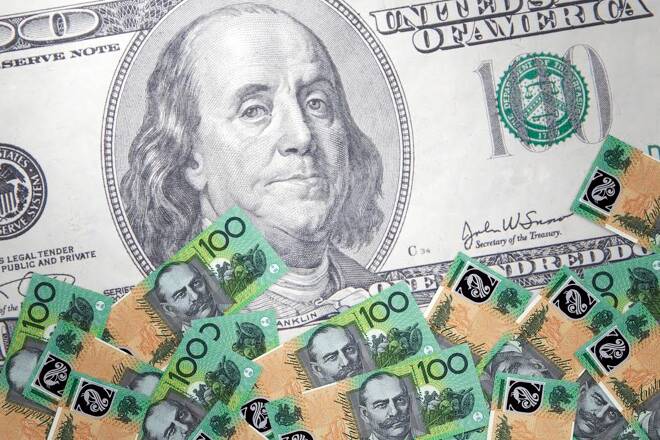Advertisement
Advertisement
AUD/USD and NZD/USD Fundamental Daily Forecast – Aussie, Kiwi Plunge after Late Session Surge by US Dollar
By:
The U.S. Dollar rose against the Aussie and Kiwi after upbeat data on personal income, spending, and manufacturing in the U.S. Midwest.
The Australian and New Zealand Dollars finished sharply lower on Friday, erasing all of their previous weekly gains as short U.S. Dollar investors aggressively covered positions at the end of the month. The price action in the Aussie and Kiwi was also influenced by weak manufacturing data from China, stronger than expected U.S. economic data and higher U.S. Treasury yields.
On Friday, the AUD/USD settled at .7711, down 0.0054 or -0.69% and the NZD/USD closed at .7162, down 0.0080 or -1.10%.
The U.S. Dollar rose on Friday against the Australian and New Zealand Dollars after upbeat data on personal income, spending, and manufacturing in the U.S. Midwest, with market participants also taking profits on the currency’s short dollar positions this month.
The Aussie and Kiwi dollar’s rose earlier in the week after the Fed’s policy announcements on Wednesday and after Fed Chair Jerome Powell acknowledged the U.S. economy’s growth, but said there was not enough evidence of “substantial further progress” toward recovery to warrant a change to its ultra-loose monetary settings.
China’s Factory Activity Growth Slows on Supply Bottlenecks, Soft Demand
China’s factory activity growth slowed and missed forecasts in April as supply bottlenecks and rising costs weighed on production and overseas demand lost momentum.
The country’s official manufacturing purchasing managers’ index (PMI) fell to 51.1 in April from 51.9 in March, data from the national Bureau of Statistics (NBS) showed on Friday.
US Data Confirms Strengthening Economy
Friday’s data showing a 4.2% rebound in U.S. consumer spending in March, amid a 21.1% surge in income as households received additional COVID-19 relief money from the government, supported the dollar. That led to a 0.4% rise in the core personal consumption expenditures (PCE) index, compared with a gain of 0.3% the previous month.
Similarly, the dollar also gained after the Chicago Purchasing Management Index (PMI) showed a reading for April of 72.1, the highest in almost four decades.
Short-Term Outlook
Investor attention will turn to the Reserve Bank of Australia’s (RBA) May policy meeting on Tuesday where it is widely expected to keep rates at a record low of 0.1%.
The only policy event on the New Zealand calendar slated next week is the country’s central bank Financial Stability Report.
For a look at all of today’s economic events, check out our economic calendar.
About the Author
James Hyerczykauthor
James Hyerczyk is a U.S. based seasoned technical analyst and educator with over 40 years of experience in market analysis and trading, specializing in chart patterns and price movement. He is the author of two books on technical analysis and has a background in both futures and stock markets.
Advertisement
